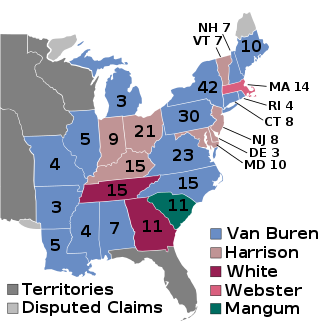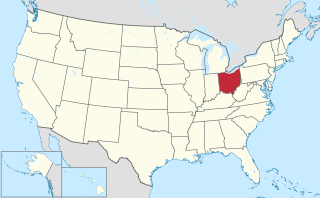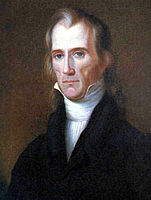
The 1836 United States presidential election was the 13th quadrennial presidential election, held from Thursday, November 3 to Wednesday, December 7, 1836. In the third consecutive election victory for the Democratic Party, incumbent Vice President Martin Van Buren defeated four candidates fielded by the nascent Whig Party.

Hugh Lawson White was a prominent American politician during the first third of the 19th century. After filling in several posts particularly in Tennessee's judiciary and state legislature since 1801, thereunder as a Tennessee Supreme Court justice, he was chosen to succeed former presidential candidate Andrew Jackson in the United States Senate in 1825. He became a member of the new Democratic Party, supporting Jackson's policies and his future presidential administration. However, he left the Democrats in 1836 and was a Whig candidate in that year's presidential election.

Willie Person Mangum was an American politician and planter who served as U.S. Senator from the state of North Carolina between 1831 and 1836 and between 1840 and 1853. He was one of the founders and leading members of the Whig party, and was a candidate for president in 1836 as part of the unsuccessful Whig strategy to defeat Martin Van Buren by running four candidates with local appeal in different regions of the country.

The 1839 Whig National Convention was a presidential nominating convention held from December 4 to December 8 in Harrisburg, Pennsylvania. It was the first national convention ever held by the Whig Party, and was organized to select the party's nominee in the 1840 presidential election. The convention nominated former Senator William Henry Harrison of Ohio for president and former Senator John Tyler of Virginia for vice president.

The 1836 United States presidential election in Georgia took place between November 3 and December 7, 1836, as part of the 1836 United States presidential election. Voters chose 11 representatives, or electors to the Electoral College, who voted for president and vice president.

The 1836 United States elections elected the members of the 25th United States Congress. The election saw the emergence of the Whig Party, which succeeded the National Republican Party in the Second Party System as the primary opposition to the Democratic Party. The Whigs chose their name in symbolic defiance to the leader of the Democratic Party, "King" Andrew Jackson, and supported a national bank and the American System. Despite the emergence of the Whigs as a durable political party, Democrats retained the presidency and a majority in both houses of Congress.

In 1840, William Henry Harrison was elected President of the United States. Harrison, who had served as a general and as United States Senator from Ohio, defeated the incumbent president, Democrat Martin Van Buren, in a campaign that broke new ground in American politics. Among other firsts, Harrison's victory was the first time the Whig Party won a presidential election. A month after taking office, Harrison died and his running mate John Tyler served the remainder of his term, but broke from the Whig agenda, and was expelled from the party.

Following is a table of United States presidential elections in Delaware, ordered by year. Since its admission to statehood in 1787, Delaware has participated in every U.S. presidential election.

Following is a table of United States presidential elections in Illinois, ordered by year. Since its admission to statehood in 1818, Illinois has participated in every U.S. presidential election.

Following is a table of United States presidential elections in Kentucky, ordered by year. Since its admission to statehood in 1792, Kentucky has participated in every U.S. presidential election. Prior to the election of 1792, Kentucky was part of Virginia, and residents of the area voted as part of that state.

Following is a table of United States presidential elections in Massachusetts, ordered by year. Since its admission to statehood in 1788, Massachusetts has participated in every U.S. presidential election.

Following is a table of United States presidential elections in New Jersey, ordered by year. Since its admission to statehood in 1787, New Jersey has participated in every U.S. presidential election.

Following is a table of United States presidential elections in New York, ordered by year. Since its admission to statehood in 1788, New York has participated in every U.S. presidential election except the election of 1788–1789, when it failed to appoint its allotment of eight electors because of a deadlock in the state legislature.

Following is a table of United States presidential elections in Ohio, ordered by year. Since its admission to statehood in 1803, Ohio has participated in every U.S. presidential election.

Following is a table of United States presidential elections in Rhode Island, ordered by year. Since its admission to statehood in 1790, Rhode Island has participated in every U.S. presidential election.

Following is a table of United States presidential elections in Vermont, ordered by year. Since its admission to statehood in 1791, Vermont has participated in every U.S. presidential election.
The history of the United States Whig Party lasted from the establishment of the Whig Party early in President Andrew Jackson's second term (1833–1837) to the collapse of the party during the term of President Franklin Pierce (1853–1857). This article covers the party in national politics. For state politics see Whig Party.




















